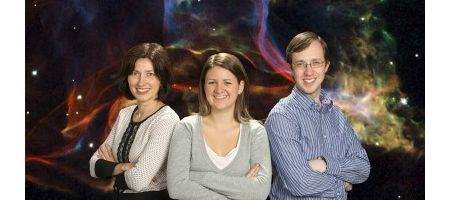A short-term intern at Australia’s Monash University appears to have cracked a problem that’s been baffling astrophysicists for decades – the so-called missing mass problem.

It’s been known for some time that the universe contains much more mass than is visible in the form of stars, planets and other objects.
“It was thought from a theoretical viewpoint that there should be about double the amount of matter in the local universe compared to what was observed. It was predicted that the majority of this missing mass should be located in large-scale cosmic structures called filaments – a bit like thick shoelaces,” says Dr Kevin Pimbblet of the School of Physics.
And during a three-month internship with the department, aerospace engineering student Amelia Fraser-McKelvie carried out a targeted X-ray search for the matter – and seems to have found some of it.
Astrophysicists had predicted that the mass would be low in density, but high in temperature – around a million degrees Celsius. This meant that, in theory, the matter should have been observable at X-ray wavelengths – just where Fraser-McKelvie saw it.
Until now, astrophysicists had been making deductions based only on numerical models, so the discovery is a huge step forward in determining what amount of mass is actually contained within filaments.
“I cannot underscore enough what a terrific achievement this is,” says Pimbblet. “We will use this research as a science driver for future telescopes that are being planned, such as the Australian Square Kilometre Array Pathfinder, which is being built in outback Western Australia.”






